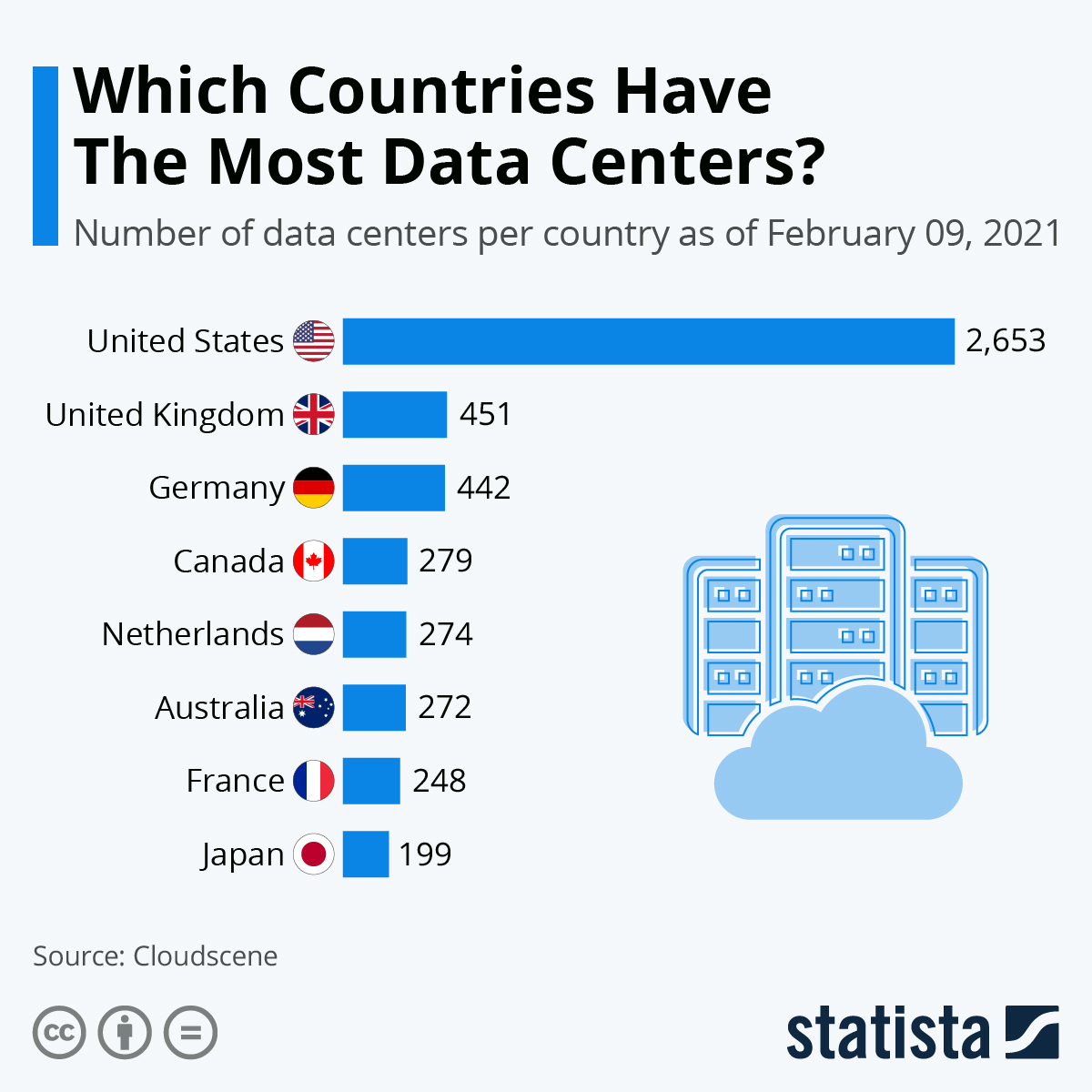The more I think about it, the less sense this graphic has
- If not per sq km, it should at least be per capita
just checking on wikipedia, divided by area GB should have bar around twice high as Germany. 209k m^2 vs 357k m^2 - and what does it mean 1 datacenter in the first place?
big as a city sprawling datacenter complex and a bunch of racks in the cellar both count as 1?
